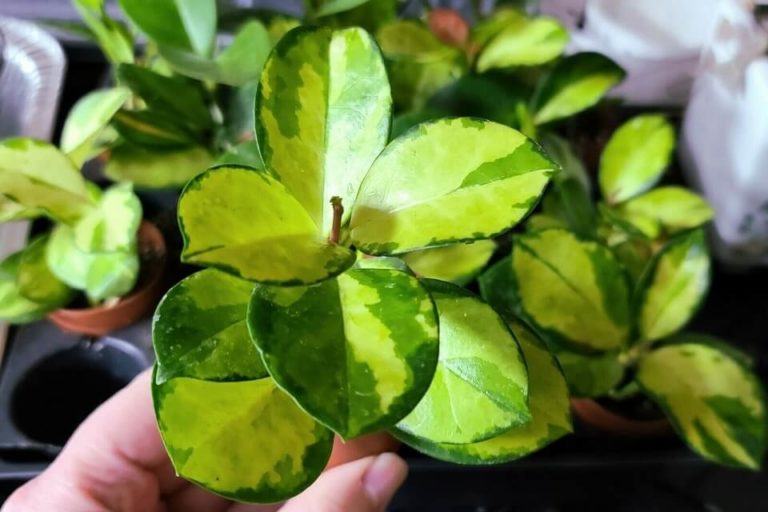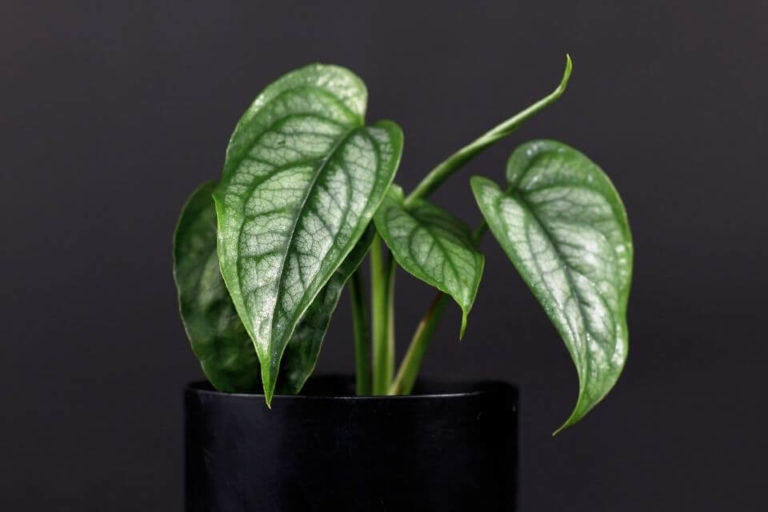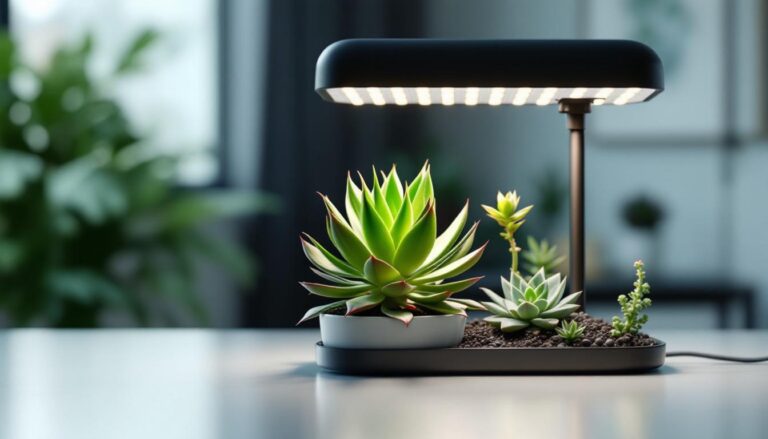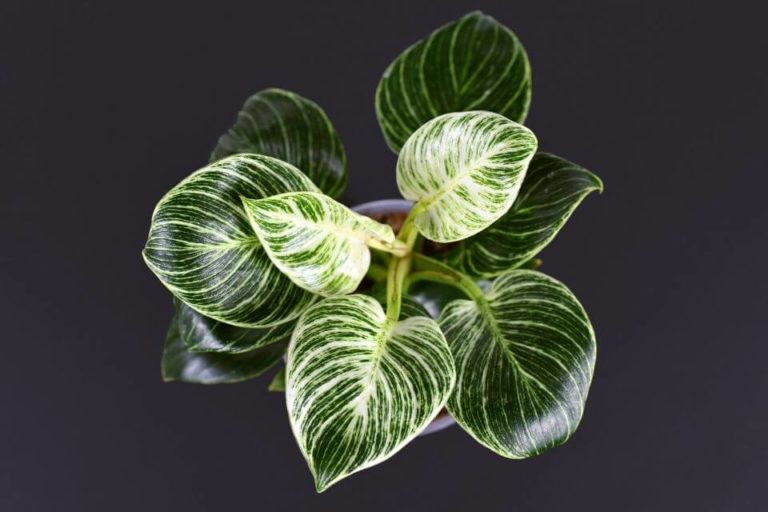Alocasia Polly Care Guide: How To Grow, Care, Propagate and Repot
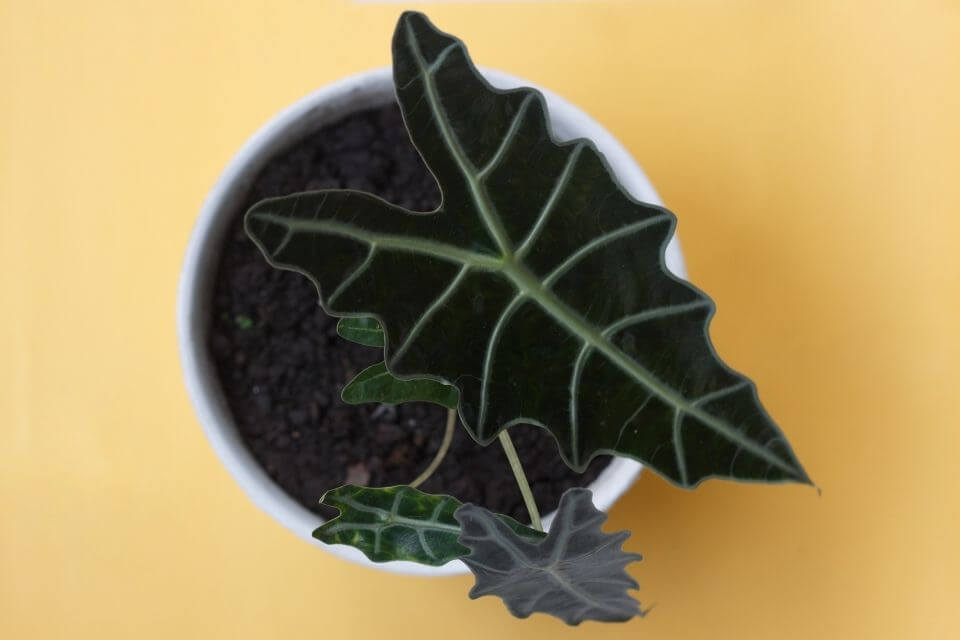
Alocasia Polly is a beautiful, dark green plant with large, arrow-shaped leaves with bright nerves. It’s a perfect addition to any home or office and can be used to create a variety of different displays.
This plant is easy to care for and propagate, making it the perfect plant for novice gardeners. It is a beautiful and exotic plant that is often used in indoor gardening.
It has large leaves that can grow up to 2 feet long and is a popular choice for adding greenery to any room. Alocasia Polly is a tropical plant and prefers warm and humid environments.
To keep your plant healthy and thriving, it is important to understand the proper care requirements. This article will provide you with all the information that you require to know about Alocasia Polly care, growth, and propagation.
| Highlights: | |
|---|---|
| Common Names: | Alocasia Polly, African Mask Plant, Alocasia x Amazonica |
| Botanical Name: | Alocasia x amazonica 'Polly' |
| Plant Family: | Araceae |
| Plant Type: | Evergreen tropical perennial |
| Origin/Native: | Rainforests of Brazil |
| Care Level: | Easy to care |
| Grow Zone: | 10 - 11 (USDA Hardiness Zone) |
| Size: | Up to 36 inches in height and 36 feet spread. The leaf is up to 20 inches long and about 10 inches in width. |
| Soil Requirement: | Light and well-draining soil with low pH levels |
| Water Requirement: | Medium moisture levels |
| Sun/Lighting: | Full sun (not direct), but require bright light |
| Temperature Req: | 60°F - 85°F (16 - 30 °C) |
| Propagation: | Dividing the rhizomes |
| Toxicity: | Highly toxic to pets and humans |
| Flowering/Color: | Very rare/ Club-shaped with Ivory and White shades |
| Uses: | House plant for decorative purposes |
TABLE OF CONTENTS
What Is Alocasia Polly Plant?
It is a tropical plant which is also known as African Mask Plant or Alocasia x Amazonica plant. It is a very popular houseplant due to its interesting leaves which have a deep green color with attractive white veins.
Alocasia Polly can be grown either as a pot plant or an indoor plant. If you’re considering adopting Alocasia Polly, first think carefully before doing so.
Although they are beautiful, the Alocasia Polly is a tropical plant with stringent requirements and be suitable for experienced people, but it would be a great experience for novices.
However, when it comes to caring for, you just need to know what this plant needs, and caring for it becomes so easy even to a beginner.
Uses & Placement
The Alocasia Polly is a popular choice for adding greenery to any room. It is a beautiful and exotic plant that is often used in indoor gardening. It’s also a great houseplant. It is grown in containers, on patios, and as a showy-leaved tropical plant for beds.
Generally, this plant is used for indoor decoration – living room, office, or any other room. During the daytime, place your plant near a window where it can get plenty of light.
In the evening, or if you live in a colder climate, move your plant to a cooler location where it will not receive direct sunlight. You can also place your plant in a shaded area outdoors if the weather is warm.
When it comes to the placement of your Alocasia Polly, you simply need to be aware of how much sunlight your plant needs. Place it in an area where it will be able to receive direct sunlight for at least 4 hours a day.
Generally, the placement of this plant determines its performance, as well as retaining its foliage color.
Alocasia Polly Size & Appearance
This is a large plant with broad, thick leaves that can grow up to 20 inches long and up to 10 inches wide. The leaves are glossy and dark green. This plant is one of the most impressive-looking plants available in the market today.
The height of the plant is also quite impressive and can grow between 24 to 36 inches tall and about 36 inches in spread(width). This plant looks very beautiful when planted indoors, creating a sleek look.
The Alocasia Polly also has unique foliage, making it stand out from other plants. The leaves have a deep green color with attractive white veins.
When grown indoors, the leaves of this plant will usually have a purple hue. If you live in a colder climate, you should place this plant near a window so that it can receive adequate sunlight. The purplish hue will be more prominent in the leaves if you do this.
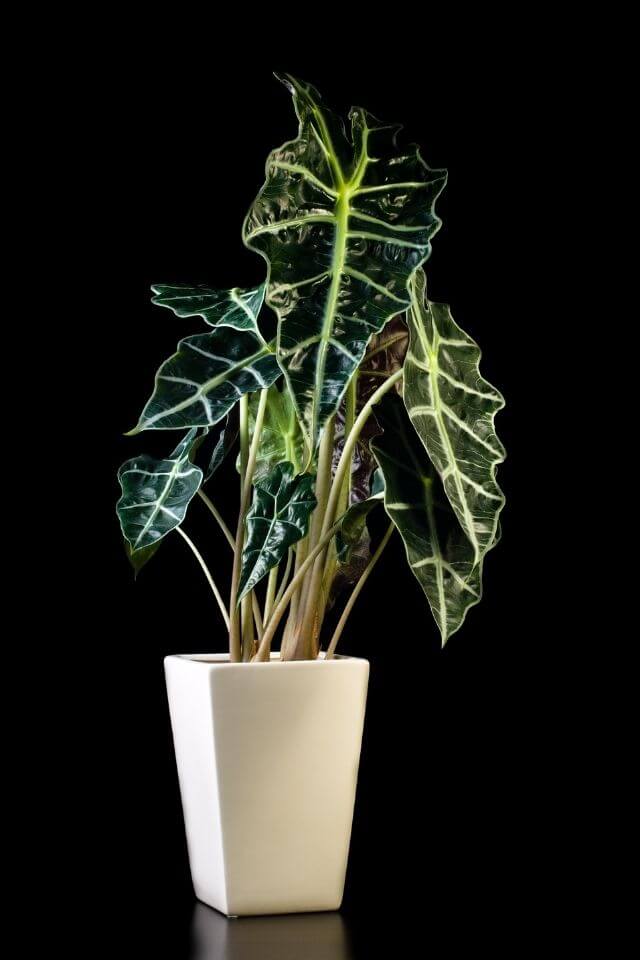
However, if you live in a warmer climate and place your plant near a window, it may not have much of a purple hue to its leaves. It will still be green with dark green markings, but it won’t be as dark as it would be in cooler climates.
The reason for this is that your jade plant needs at least 4 hours of direct sunlight a day. This can be achieved by moving it to a window that gets full sun for most of the day.
Alocasia Polly Care & Planting
When it comes to planting the Alocasia Polly, great care is required while keeping several factors into consideration. The following are things to consider when caring for and planting your Alocasia Polly plant.
Right Pot For Alocasia Polly:
Choosing the right pot is essential for Alocasia Polly Plant. The pot should be wide with holes at the bottom so that water can drain out. Make sure that the pot you choose has a drainage hole, as this plant doesn’t like wet feet.
The pot size should also be considered when planting your Alocasia Polly. In general, these plants are sold in 6-inch pots. When you need to re-pot it then go for a bigger pot that is 18-inch wide and 16-inch in depth.
Alocasia Polly Soil Requirement:
This plant requires well-drained soil, rich in organic matter. A potting mix that is high in organic matter will work well for your plant. You can also make your soil mix by combining your potting soil with compost.
Furthermore, a combination of coir fiber and perlite is ideal. Replacing coir fiber with peat moss is both less expensive and more nutritious. Another alternative is to use a LECA to plant your Alocasia Polly.
This helps to hydrate your home plant while also providing ample air access for the roots of the Polly.
Alocasia Polly Watering:
The watering of your Alocasia Polly plant is very crucial, as it is a water-loving plant but delicate to excess water or soggy soil. Generally, this plant needs to be watered frequently. The Polly plant thrives on wet soil.
This plant dislikes becoming dehydrated, which can make it difficult to determine when to give more water. However, when the upper surface layer of this plant becomes somewhat dry, it’s time to water it.
To ensure that the roots are receiving the water, allow water to drain out of the pot through the pot bottom holes. Also, ensure that there is no excess water in the saucer, as it can cause the roots to rot.
Alocasia Polly Light Requirements And Exposure:
This plant loves bright light but not harsh and direct sunlight. This is because the plant is prone to sunburned leaves. The best place for your plant is near a window where it will get plenty of light with direct sunlight filtered.
When your plant is not getting enough light, the leaves will start to turn yellow. If you live in a colder climate and your Alocasia Polly is receiving too much sunlight, the leaves may start to turn purple.
Alocasia Polly Temperature Needs:
The ideal temperature for your Alocasia Polly is between 60 and 80 degrees Fahrenheit. However, the plant can tolerate a temperature range of 55 to 90 degrees
Fahrenheit. If the temperature falls below 50 degrees Fahrenheit, your plant may start to experience leaf damage. On the other hand, if the temperature rises above 90 degrees Fahrenheit, the leaves may start to turn brown and dry.
Alocasia Polly Humidity Levels:
This plant thrives in high humidity levels, with a range of 60 to 80 percent humidity. While you can increase the humidity levels around your plant by using a humidifier, this is not always necessary.
If the humidity levels in your home are low, you can place your plant in a bathroom or kitchen where the humidity levels are higher. Another option is to place the pot on a tray filled with moist pebbles.
The water will evaporate from the pebbles, creating higher humidity levels around your plant.
Fertilizing:
Fertilizing your Alocasia Polly is not required often, but should be done during the spring and summer months. A balanced fertilizer can be used at half the recommended strength. Sprinkle the fertilizer around the edge of the pot, and then water it in.
Pruning Requirement:
Alocasia Polly doesn’t require much pruning. If you want to prune your plant, do so in the springtime. Remove any dead or damaged leaves. You can also prune to shape your plant.
When pruning, make sure to use sterile pruning scissors or knives. This will help to prevent the spread of any diseases.
Alocasia Polly Repotting With Steps
Alocasia Polly is a tropical plant that loves moisture and high humidity. Because of this, it’s necessary to re-pot your plant every year or two.
Step 1: Preparation
When re-potting, use a pot that is only slightly larger than the original pot. This will help to keep the plant from becoming root-bound.
Step 2: Potting
When potting your plant, you will need a well-draining potting mix. A good mix can be made with one part potting soil, one part peat moss, and one part perlite.
Step 3: Repotting
When re-potting, be careful not to damage the roots. Gently loosen the soil around the roots and then place the plant in the new pot. Fill in around the roots with the potting mix and then water well.
Alocasia Polly Propagation
Alocasia Polly can be propagated by dividing the rhizomes, or root system, into several pieces. Each piece should have at least one eye or a growing point.
Step 1: Preparation
Before dividing the rhizomes, make sure the potting mix is moist and nutrient-rich. This will help to prevent the roots from drying out.
Step 2: Dividing Rhizomes
Use a sharp knife to divide the rhizomes into several pieces. Each piece should have at least one eye or a growing point.
Step 3: Potting
Each piece should be potted in a separate container with moist, well-draining potting mix. Be careful not to damage the roots when potting.
Step 4: Watering
After potting, water each piece well and then place it in a warm, sunny location. Keep the soil moist but not wet. New leaves should start to form in a few weeks.
Alocasia Polly Problems And Common Diseases
Generally, Alocasia Polly is affected by various common problems and diseases, therefore, care and prevention are ideal for this plant. They include:
– Alocasia Polly Yellow Leaves
One of the most common problems with Alocasia Polly is yellow leaves. This may be caused by a lack of sunlight, overwatering, or a nutrient deficiency.
– Alocasia Polly Dormant
This plant may go dormant during the winter months. This is normal and no care is required. The leaves will yellow and die back, but new leaves will grow in the spring.
– Alocasia Polly Leaves Curling
Curling leaves can be a sign of over-watering, under-watering, or nutrient deficiency.
– Alocasia Polly Spider Mites
These tiny pests can cause webbing on the leaves and can lead to leaf loss. They can be controlled with a miticide.
– Brown Patches On Leaves
Brown patches on the leaves may be a sign of fungal disease. This can be treated with a fungicide.
Tips for maintenance and Care
- Alocasia Polly plant requires plenty of sunlight, so make sure to provide it with a spot near a bright window.
- The soil should be kept moist, and a small amount of organic fertilizer can be added to the soil every month or two to help your plant grow.
- This plant prefers moist, well-drained soil.
- Alocasia Polly plants require easy care and maintenance while maintaining a healthy plant is not too difficult.
- Be sure to water and fertilize regularly, and rotate the plant to ensure all sides receive equal light exposure.
Alocasia Polly Growth Habits
You can expect one or two new leaves per month with ideal growing conditions for this fast-growing plant. During the spring and fall, you can anticipate regular development.
It goes dormant during the winter and does not grow new leaves. It is also conceivable that older leaves wilt and die away during dormancy.
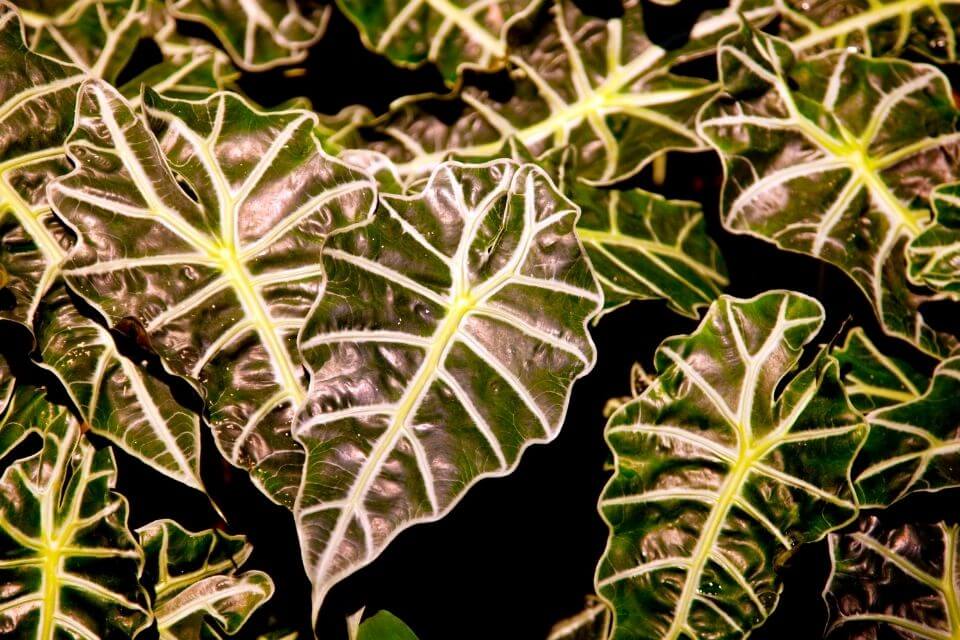
FAQs
What To Do With Your Alocasia Polly When You Get It The First Time?
When you get a new plant, it’s critical to quarantine it for at least two weeks from your other houseplants. After that, it can be introduced to other houseplants or placed in its permanent spot, if no pests or diseases are discovered.
Besides, it is important to check the soil, if dry, water immediately as Alocasia Polly is not drought-resistant.
Does Alocasia Polly Flower?
Alocasia Polly does flower very rarely, but when it does, the flowers are club-shaped with Ivory and White shades. So, the short answer is a no, because it does not flower indoors.
Is Alocasia Polly A Difficult Plant?
Generally, Alocasia Polly is a fairly easy plant to care for. On the other hand, this plant is said to be a challenging plant to beginners.
However, it can also be a difficult plant when not properly taken care of. With the right information and care, Alocasia Polly can be an easy and beautiful addition to your home or garden.
So, is Alocasia Polly a difficult plant?
It depends on you. However, there are a few things you need to be aware of to keep your plant healthy.
First, make sure your plant receives plenty of sunlight. Alocasia Polly thrives in bright, sunny locations but not direct sunlight. If your plant is not receiving enough light, the leaves will start to turn yellow.
Second, be sure to water your plant regularly. It requires moist soil but not wet soil. overwatering can cause the roots to rot and the leaves to wilt.
Third, Alocasia Polly needs a balanced diet of nutrients. A lack of nitrogen, phosphorus, or potassium can cause the leaves to turn yellow.
Where Should Alocasia Polly Be Placed?
Alocasia Polly is a beautiful, tropical plant that can be a great addition to your home or garden. When choosing a location for your Polly plant, be sure to consider the following:
Alocasia Polly Needs Sun: It needs plenty of sunlight. However, it should not be placed in direct sunlight.
Alocasia Polly Needs Moist Soil: Alocasia Polly requires moist soil but not wet soil. overwatering can cause the roots to rot and the leaves to wilt.
With the two factors in mind, then finding the perfect spot for your plant is easy. Generally, the best position is near a window that provides plenty of light and shaded/filtered direct sunlight, especially the mid-day sunlight.
Does Alocasia Need Drainage?
One important thing to note about this plant is that it requires good drainage. This plant does not like to sit in wet soil for extended periods, as this can lead to root rot and other health problems.
If you are not able to provide your Alocasia Polly with the right growing conditions, it is best to choose another plant that will be more suitable for your home.
Besides good drainage, the plant requires well-draining soil. Use a pot with drainage holes. Having a pot with drainage holes means that the extra water won’t stay in the container.
Otherwise, you might risk keeping the surplus water at the bottom of the container if you utilize a container that doesn’t have a drainage hole.
Which might cause root rot and the simplest method to avoid root rot is to include a drainage hole in your pot.
How Does Big An Alocasia Polly Get?
Alocasia Polly can grow quite large, reaching heights of up to 3 feet. The size of the plant will depend on several factors, including the growing conditions and the age of the plant.
Young plants typically grow more quickly than older plants and will reach larger sizes. To grow to the maximum size, it needs plenty of space to grow, so make sure you have enough room for it before purchasing one.
Ensure that your plant has sufficient water, adequate fertilizer, and re-pot your plant accordingly, to achieve the best results.
How Much Sun Does Alocasia Polly Need?
It prefers bright, indirect sunlight. Too much direct sunlight can cause the leaves to burn and dry, so it is important to provide your plant with the right amount of light.
If you don’t have a spot in your home that receives bright, indirect light, you can place your plant near a window but make sure to rotate the plant regularly so all sides receive equal light exposure.
What Kind Of Soil Does Alocasia Polly Need?
Alocasia Polly prefers moist, well-drained soil that is rich in organic matter. A good quality potting mix or soil will be perfect for your plant. Be sure to water your plant regularly and never allow the soil to dry out.
You can also add a small amount of organic fertilizer to the soil after a month or two, to help your plant grow and thrive.
Is Alocasia Polly Toxic To Cats And Dogs?
This is a lovely tropical plant, but unfortunately, it is one of the plants that are toxic to dogs and cats, as well as humans. It’s poisonous when ingested, so keep it out of reach of pets and tiny children.
If you find that your pets have eaten this flora, contact your veterinarian immediately for assistance. Symptoms of poisoning include vomiting, diarrhea, and excessive drooling. If left untreated, it can be deadly.
So please be very careful if you have pets, or choose another non-toxic plant to care for instead.
Is Alocasia Polly A Rare Plant?
No, Alocasia Polly is not a rare plant. It is easily available at most nurseries and garden centers. However, it is not as commonly found as other houseplants, so it may be a bit more difficult to find than some of the more popular varieties.
This plant can easily be found in tropical climates and is also becoming more popular in the United States.
Can I Grow An Alocasia Polly Plant In A Greenhouse?
Yes, you can grow an Alocasia Polly plant in a greenhouse. Many gardeners choose to grow this plant in a greenhouse because it requires a warm and humid environment, which is often difficult to recreate indoors.
If you can provide the right growing conditions, it will thrive in a greenhouse setting. Be sure to water and fertilize regularly, and rotate the plant to ensure all sides receive equal light exposure.
Generally, a greenhouse provides the perfect environment for growing tropical plants like the Alocasia Polly plant.
Is Alocasia Polly A Suitable Houseplant For Beginners?
This plant is a beautiful and easy-to-care-for tropical plant that is suitable for both beginners and experienced gardeners. This plant can be grown in a variety of climates but prefers warm, humid environments.
It requires plenty of sunlight, so make sure to provide it with a spot near a bright window. The soil should be kept moist, and a small amount of organic fertilizer can be added to the soil every month or two to help your plant grow.
Generally, it requires easy care and maintenance, while maintaining a healthy plant is not too difficult. So, if you are looking for an easy-to-care-for houseplant, and you are well-informed about the Alocasia Polly, then it is a great option for you.
Where Do I Buy An Alocasia Polly Plant?
Alocasia Polly plants are easily available at most nurseries and garden centers. You can also find them online from a variety of retailers. Be sure to do your research before purchasing this plant, as not all plants are of the same quality.
It is important to find a reputable nursery or seller to ensure you are getting a healthy and vibrant plant. The best place to buy this plant online is Etsy.com which has so many options that you can go with.
Conclusion
Alocasia Polly plant is an easy-to-care-for houseplant that can be grown in a variety of climates. This plant prefers moist, well-drained soil and plenty of sunlight, making it a great choice for those who have limited time to care for their plants.
This plant is also known for its fast growth habit, making it a great option for those who are looking for a quick addition to their home décor.
With proper care and maintenance, your plant will thrive and provide you with years of enjoyment. So, there you have it. Everything you need to know about Alocasia Polly’s care and maintenance.
Be sure to water and fertilize regularly, provide your plant with plenty of sunlight, and give it good drainage to keep it healthy and looking its best.

